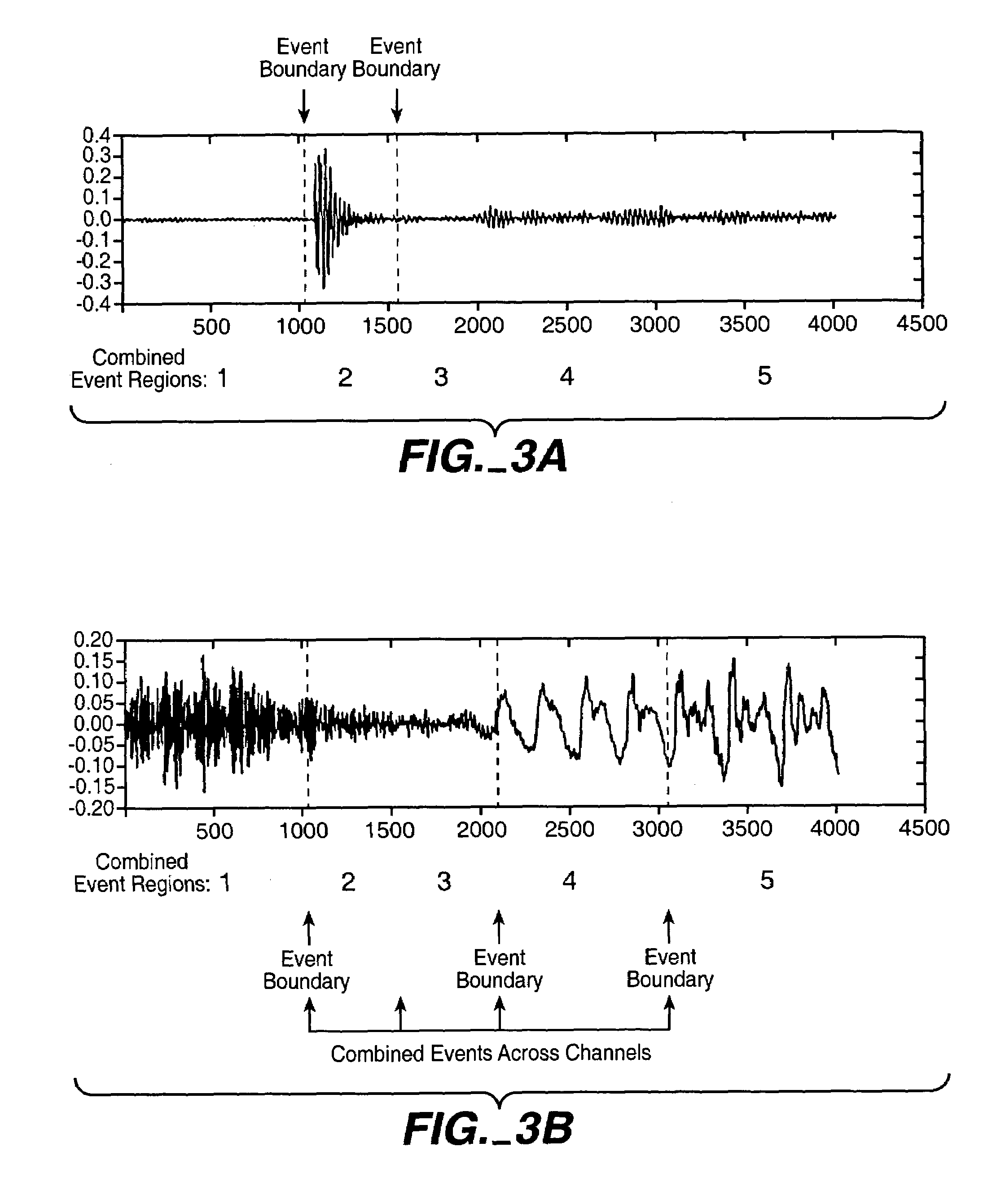Segmenting audio signals into auditory events
a technology of audio signals and segments, applied in the field of psychoacoustic processing of audio signals, can solve the problems of computational complexity, specialized techniques for sound separation, and the practicability of auditory scene analysis, and achieve the effect of reducing the number of audio signals
- Summary
- Abstract
- Description
- Claims
- Application Information
AI Technical Summary
Benefits of technology
Problems solved by technology
Method used
Image
Examples
Embodiment Construction
[0045]In accordance with an embodiment of one aspect of the present invention, auditory scene analysis is composed of three general processing steps as shown in a portion of FIG. 5. The first step 5-1 (“Perform Spectral Analysis”) takes a time-domain audio signal, divides it into blocks and calculates a spectral profile or spectral content for each of the blocks. Spectral analysis transforms the audio signal into the short-term frequency domain. This can be performed using any filterbank, either based on transforms or banks of bandpass filters, and in either linear or warped frequency space (such as the Bark scale or critical band, which better approximate the characteristics of the human ear). With any filterbank there exists a tradeoff between time and frequency. Greater time resolution, and hence shorter time intervals, leads to lower frequency resolution. Greater frequency resolution, and hence narrower subbands, leads to longer time intervals.
[0046]The first step, illustrated c...
PUM
 Login to View More
Login to View More Abstract
Description
Claims
Application Information
 Login to View More
Login to View More - R&D
- Intellectual Property
- Life Sciences
- Materials
- Tech Scout
- Unparalleled Data Quality
- Higher Quality Content
- 60% Fewer Hallucinations
Browse by: Latest US Patents, China's latest patents, Technical Efficacy Thesaurus, Application Domain, Technology Topic, Popular Technical Reports.
© 2025 PatSnap. All rights reserved.Legal|Privacy policy|Modern Slavery Act Transparency Statement|Sitemap|About US| Contact US: help@patsnap.com



